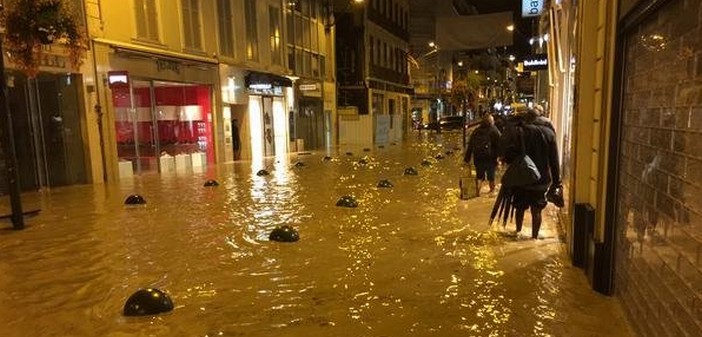The deadly weather events of last week raise several questions. Could last week’s tragedy have been avoided? That is the question everyone is asking.
Firstly, criticism focused on Météo-France, which allegedly failed to properly warn about the upcoming risks.
The mayor (Les Républicains) of Nice, Christian Estrosi, said he has “many questions about how Météo-France operates” because “we were clearly at a level that was not orange but red.”
Meanwhile, the president of the Alpes-Maritimes departmental council, Eric Ciotti, lamented “a trivialization of the orange alert that may diminish our citizens’ sense of caution.”
According to Pascal Brovelli from Météo-France’s forecasting service, these criticisms are unfounded because it was “very difficult to predict such intensity in such a short time.” Indeed, in just a few hours, torrents of rain fell last Saturday on the Alpes-Maritimes: in Cannes, the equivalent of two months of rain was recorded in two hours, and in Antibes, the equivalent of a month’s worth of rain fell in just 30 minutes.
However, some contend that it wasn’t so much the heavy rainfall that caused these floods, but the particularly extensive urbanization of the Côte d’Azur.
The proliferation of suburban areas, parking lots, and roads in the Côte d’Azur, at the expense of parks and gardens, is indeed a hindrance when the region faces heavy rainfall, like last week. This is because water flows over the asphalt without being able to seep into the ground, carrying everything in its path.
A Senate report from 2012 highlighted this urbanization as a factor exacerbating floods: “Strictly speaking, floods and their consequences are not ‘natural’ disasters. Indeed, while the triggering factor is indeed a meteorological phenomenon, sometimes extraordinary […], it applies to a territory long since reshaped by humans, which either diminishes or aggravates the consequences,” the report explained.
Stéphanie Bidault, director of the European Center for Flood Risk Prevention (CEPRI), is well aware of this observation. “What happened in the Alpes-Maritimes is indeed linked to what we call pluvial runoff, which is a phenomenon linked to the urbanization of cities that are no longer able to regulate sudden water influxes,” she explains.
For the CEPRI director, all this is the result of urban policies devised over thirty years ago, a time when there was less concern about the risks involved. However, she believes it is impossible to turn back now. Therefore, prevention should focus on raising public awareness.


